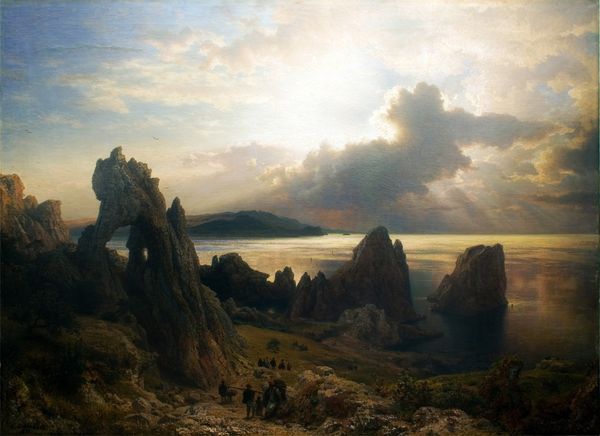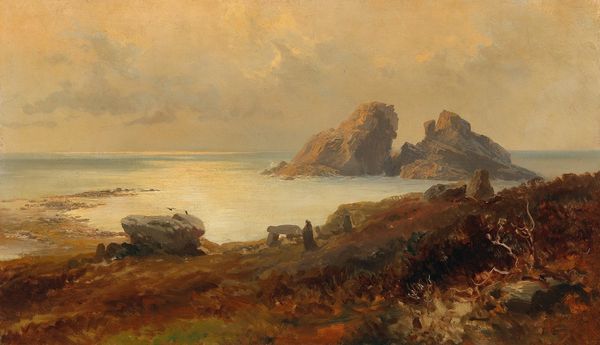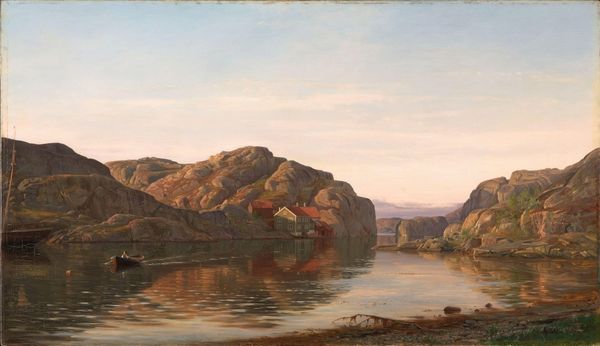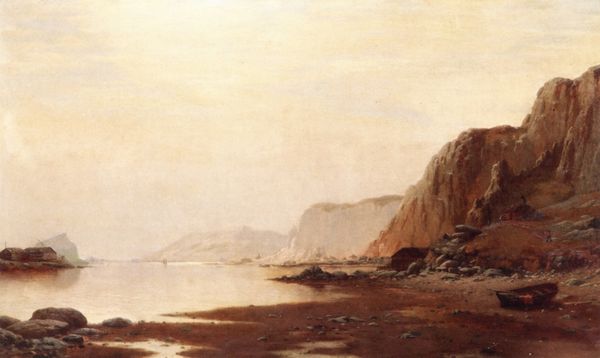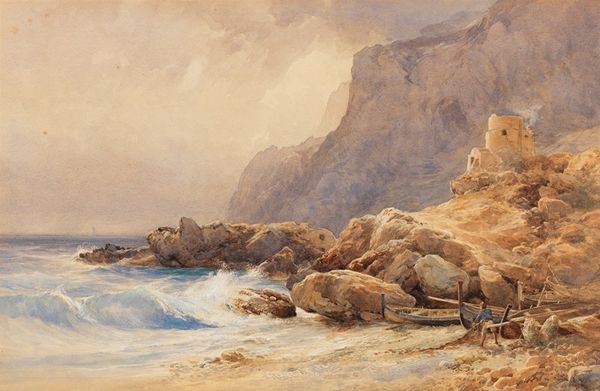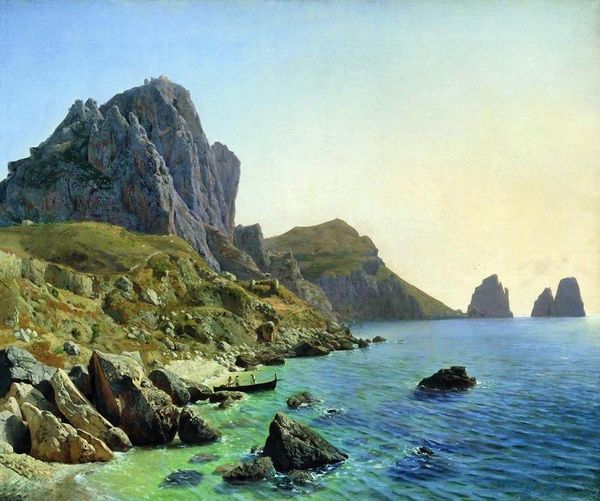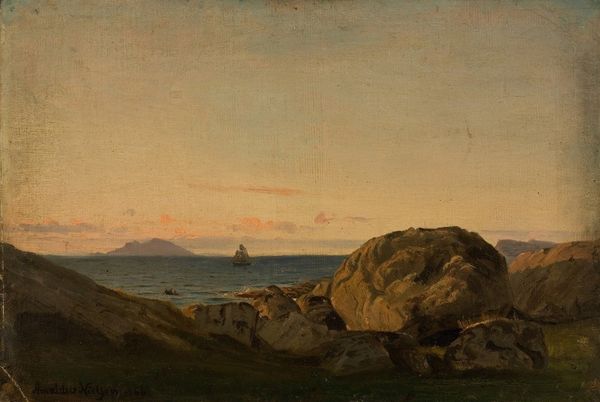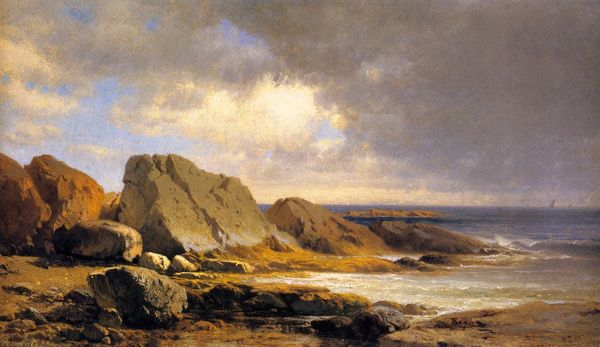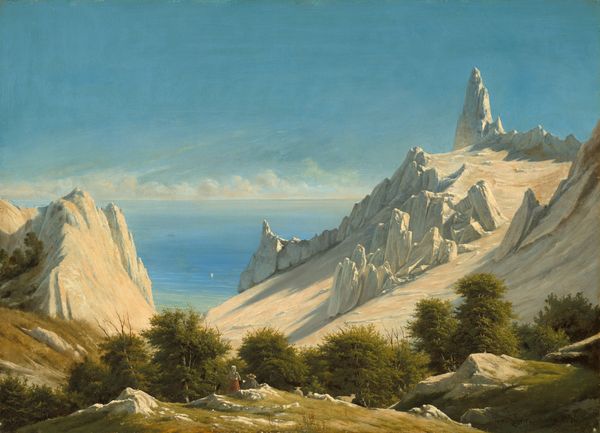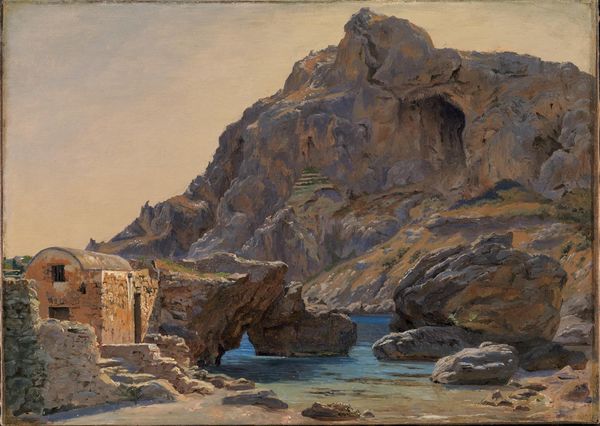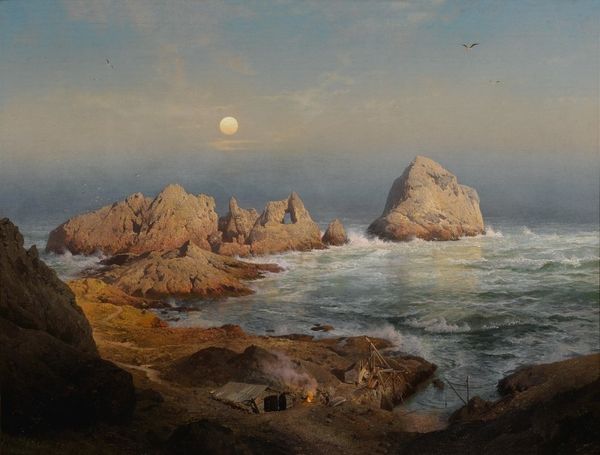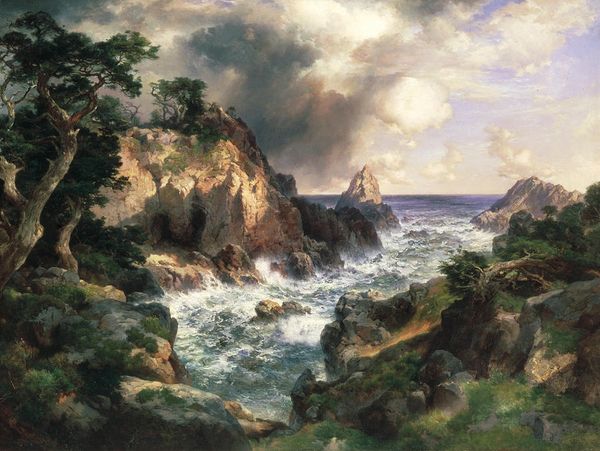
painting, oil-paint, canvas
#
painting
#
oil-paint
#
landscape
#
oil painting
#
canvas
#
romanticism
#
seascape
#
realism
Dimensions: 157 cm (height) x 232 cm (width) (Netto)
Curator: Painted by Christen Købke between 1841 and 1843, this work, titled "A Rocky Coast, Capri. After Sunrise", captures a serene coastal view of the Italian island. Editor: It’s almost impossibly smooth, isn’t it? That pale light washing over the cliffs—I wonder about the kind of ground pigments he must have used to get such even tones. The canvas practically glows. Curator: Consider the romanticism prevalent at the time. He is certainly capturing an idealized version of nature, wouldn’t you agree? Look at the symbol of the majestic mountain as the sublime in contrast with small-scale people in the boat—this shows nature's dominance and our human connection. Editor: Right, but even that symbolic structure comes from material conditions. How was the paint prepared, what brushes did he use, and how does that fine detail in the distant rocks—or the way the sunlight interacts with the surfaces—relate to contemporary artistic practices and technologies? The clarity itself is achieved through meticulous application and particular material choices. Curator: The choice of light is itself deeply symbolic. It evokes a sense of hope and renewal. He may be signalling a moment of change, reflection—certainly appealing to a specific emotional state. Editor: Or appealing to a burgeoning market for landscape paintings that captured this exact kind of mood! Who bought this painting, and where did it end up next? Understanding its market life explains why someone thought that shimmering, picturesque view was worth owning, transporting, displaying... It shifts the focus from pure aesthetics. Curator: That’s true, though I find its evocative use of space deeply resonating still today, and those very choices speak to the romantic ideology of that time, offering the viewer an escape into the beauty of an untouched nature, whether real or perceived. Editor: Absolutely, but let’s not forget that “untouched nature” came from a canvas treated with specific materials, primed in a studio by a skilled hand working within a particular economic and artistic structure! Curator: Fair enough, a view always comes with context and creation, and seeing the romantic ideal also requires seeing the conditions for its creation. Editor: Exactly! To consider it as material practice gives you an even greater sense of appreciation for the landscape depicted.
Comments
No comments
Be the first to comment and join the conversation on the ultimate creative platform.

